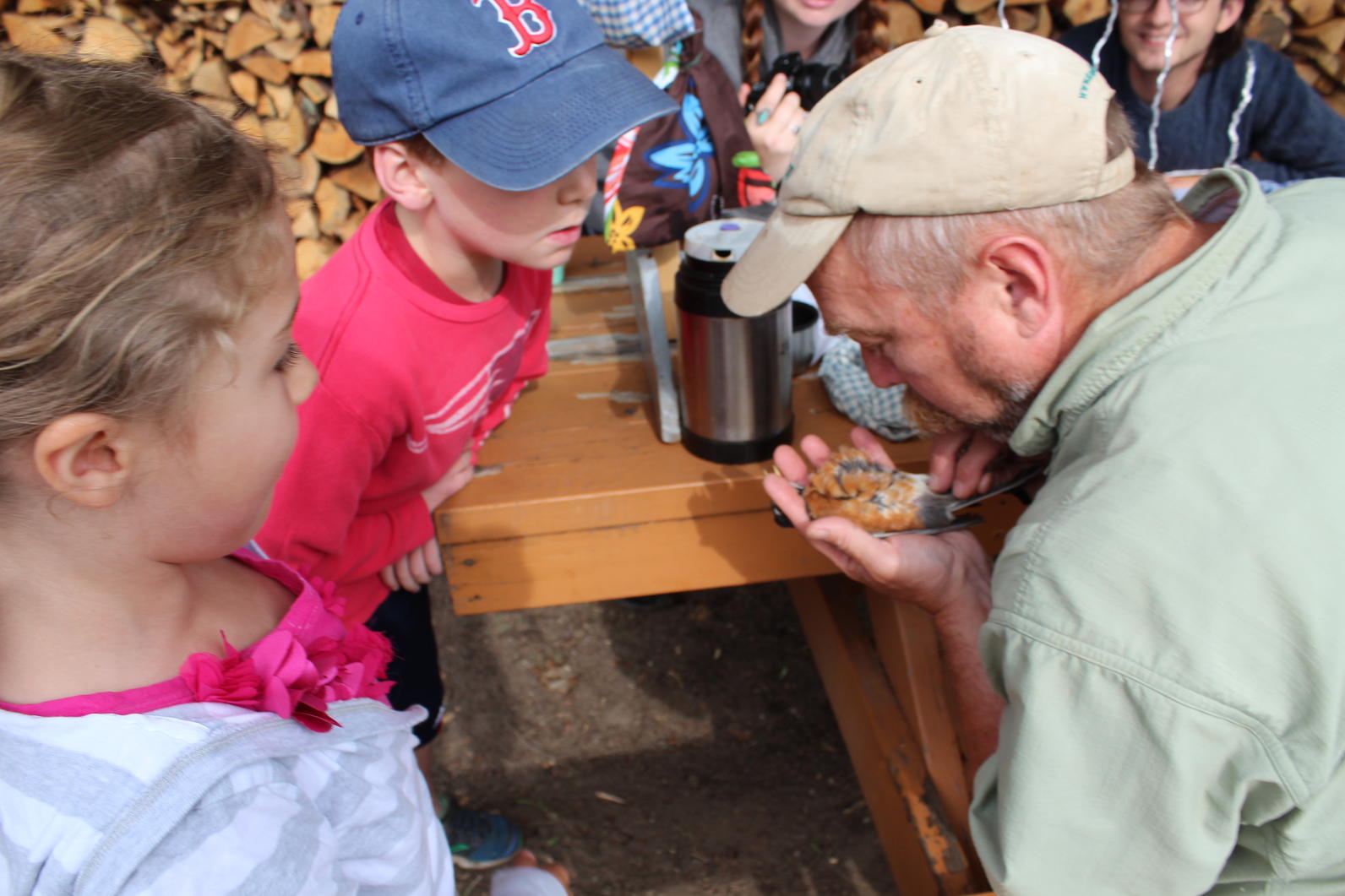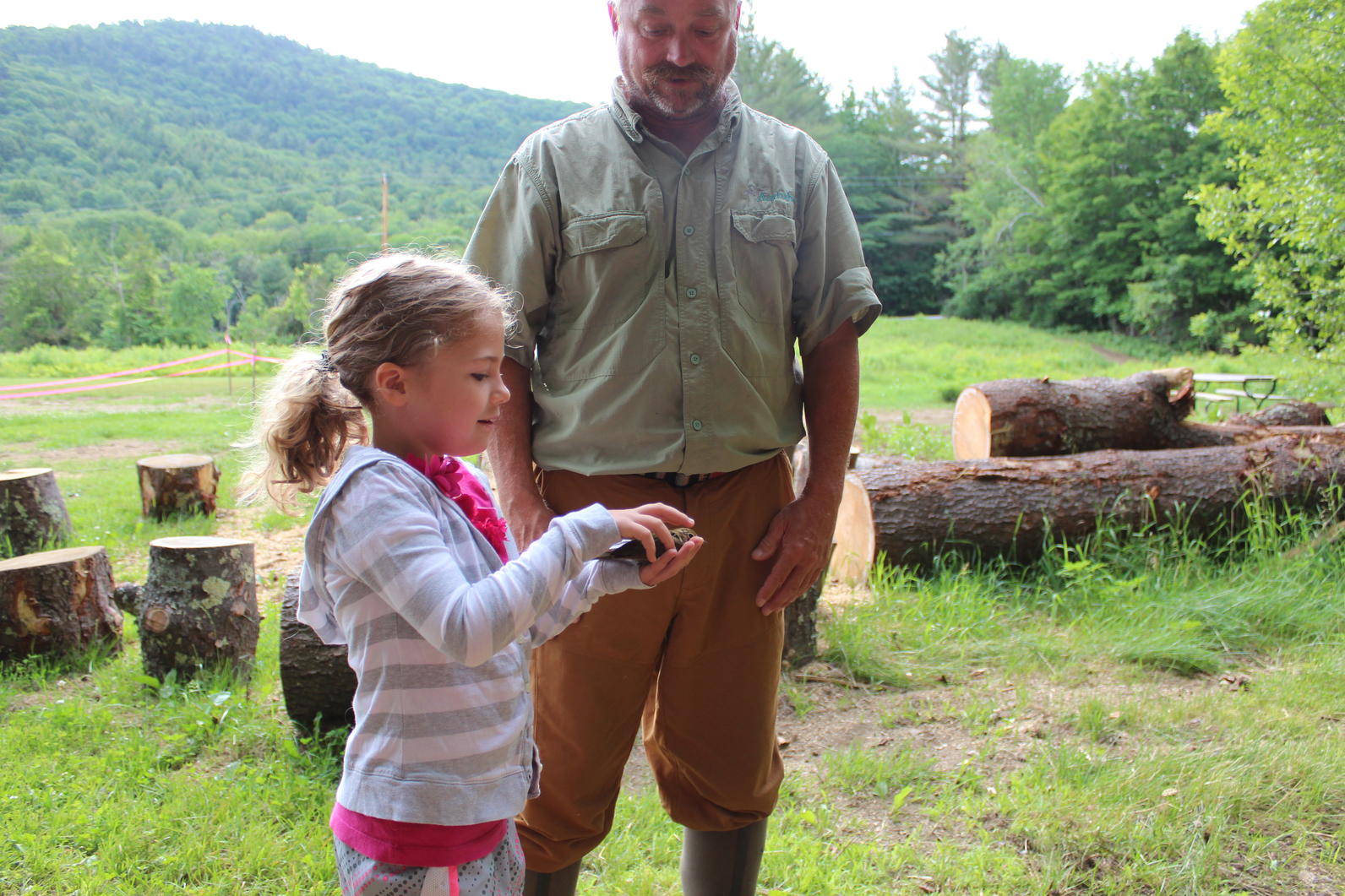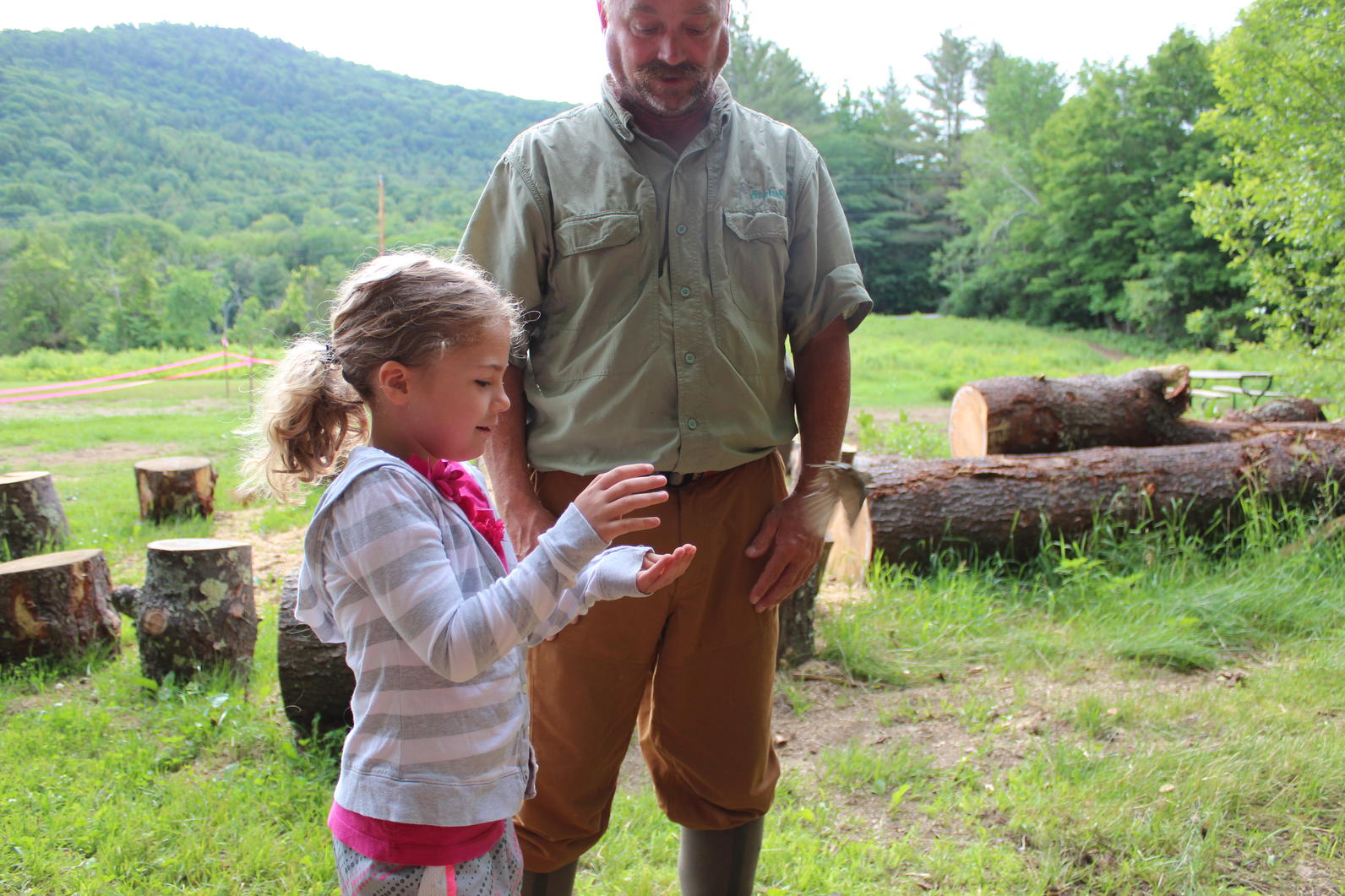At the Green Mountain Audubon Center in Huntington, summer has arrived. Visitors hike, picnic and cool off in the Huntington River. Day campers howl like coyotes in the forest and children are seen playing running games in the fields. One of the most beautiful times to visit the Center is just after dawn. This is the time of day when beavers are still at work in the pond, birds are singing and the morning car traffic hasn’t started on the Main Road yet.
It is at this early hour that you may run into Mark LaBarr out on the trails. Mark is Audubon Vermont’s Conservation Program Manager and a Master Bird Bander. Eight times each summer, he sets up mist nets along the trails for an important bird conservation project.
Mist nests are silky, black nets that are extremely hard to see in dim light. He uses the mist nets to catch birds. For 22 years, he has banded birds at the Audubon Center as part of the Monitoring Avian Productivity and Survivorship (MAPS) program. This program is a continent-wide collaborative network of close to 2,000 bird-banding stations that work to document bird species and train the next generation of avian conservationists. At the Audubon Center, Mark invites the public to join him at the bird banding station to get a close up look at some of the birds breeding at the Audubon Center and to learn more about our important conservation efforts. (For more information and updates: http://bit.ly/BirdBanding)
I had the pleasure of visiting the bird banding station with my daughter and her friend earlier this summer. The experience was unforgettable. When we arrived, Mark and his intern, Lena, had just returned at the data collection station, located in the field near the Audubon sugarhouse. They had caught eight birds, each comfortably secured in their own soft, cloth bag waiting to be banded. My daughter observed that some birds wait more patiently than others do. Mark and Lena worked diligently to collect and record the necessary data on each bird as quickly as possible and then release it, with the goal of causing as little stress as possible to the birds. We were able to see them work with Ovenbirds, American Robins, Veerys, a Black-capped Chickadee a Gray Catbird and a Cedar Waxing. Half the fun was waiting to see what kind of bird was in each bag!
Mark is an exceptional educator as well as a biologist. As he worked with Lena to guide her in the intricacies of handling of the birds safely and in the data collection, he also shared interesting information with onlookers, answered our questions and engaged the children. For example, my daughter and her friend thought it was funny to see Mark gently blow on the belly of a robin to look for a brood patch. They learned from Mark that a brood patch is a bald spot found on the belly of breeding female birds. The brood patch is used to help incubate eggs with direct body heat.

We watched quietly as each bird was identified by species, sex, and age when possible. Each bird was weighed and wing measurements were taken. Most importantly, each bird was given a band on its foot. The bands are made of a lightweight metal and they come in a variety of sizes. The smaller the bird, the smaller the band. The kids marveled at the banding tools, especially the banding pliers that are used to carefully close the band around the birds’ foot. Each band comes with a unique number imprinted on it. These bands do not affect the bird’s ability to fly or gather food. The bands are extremely helpful to scientists who can learn about where these birds move throughout their lives when they are recaptured.
Mark often recaptures birds, most of which were banded by him in previous years. The birds that Mark recaptures are often caught in the same net year after year. This tells us that these individuals are able to migrate thousands of miles each year, and then return to same exact acre of land to breed. It is truly a remarkable feat. It drives home the importance of making sure that breeding grounds are healthy and intact for the birds when they return.
I highly encourage you to visit and observe the bird banding station in action this summer at the Green Mountain Audubon Center. Seeing birds up close, in the hands of professional Bird Bander is worth getting up early to see. Mark even let my daughter release an Ovenbird, which was an incredibly impactful experince for her, that will not be forgotten. Follow this link for more information about the next bird banding opportunities at the Audubon Center this summer: http://bit.ly/BirdBanding












